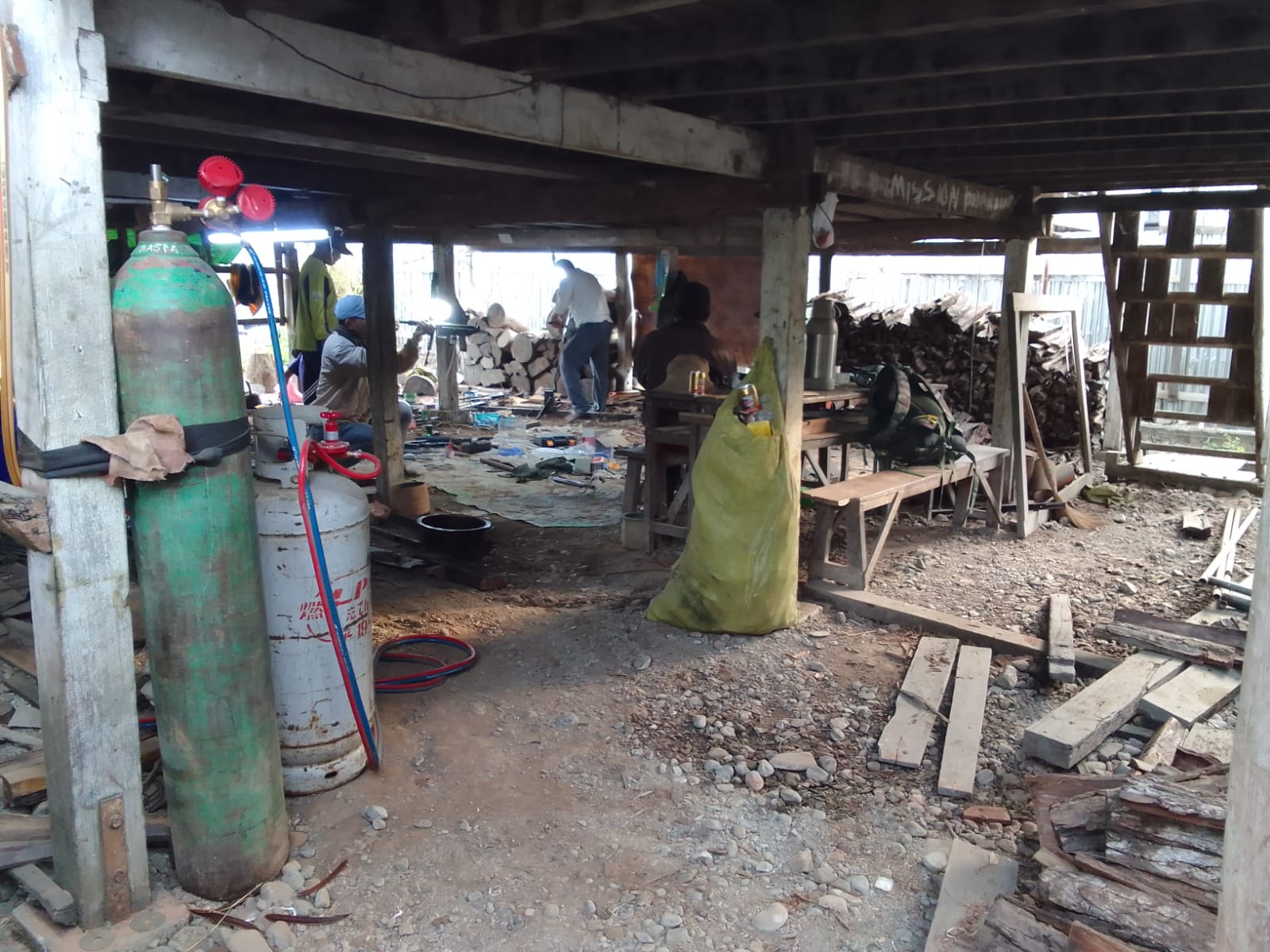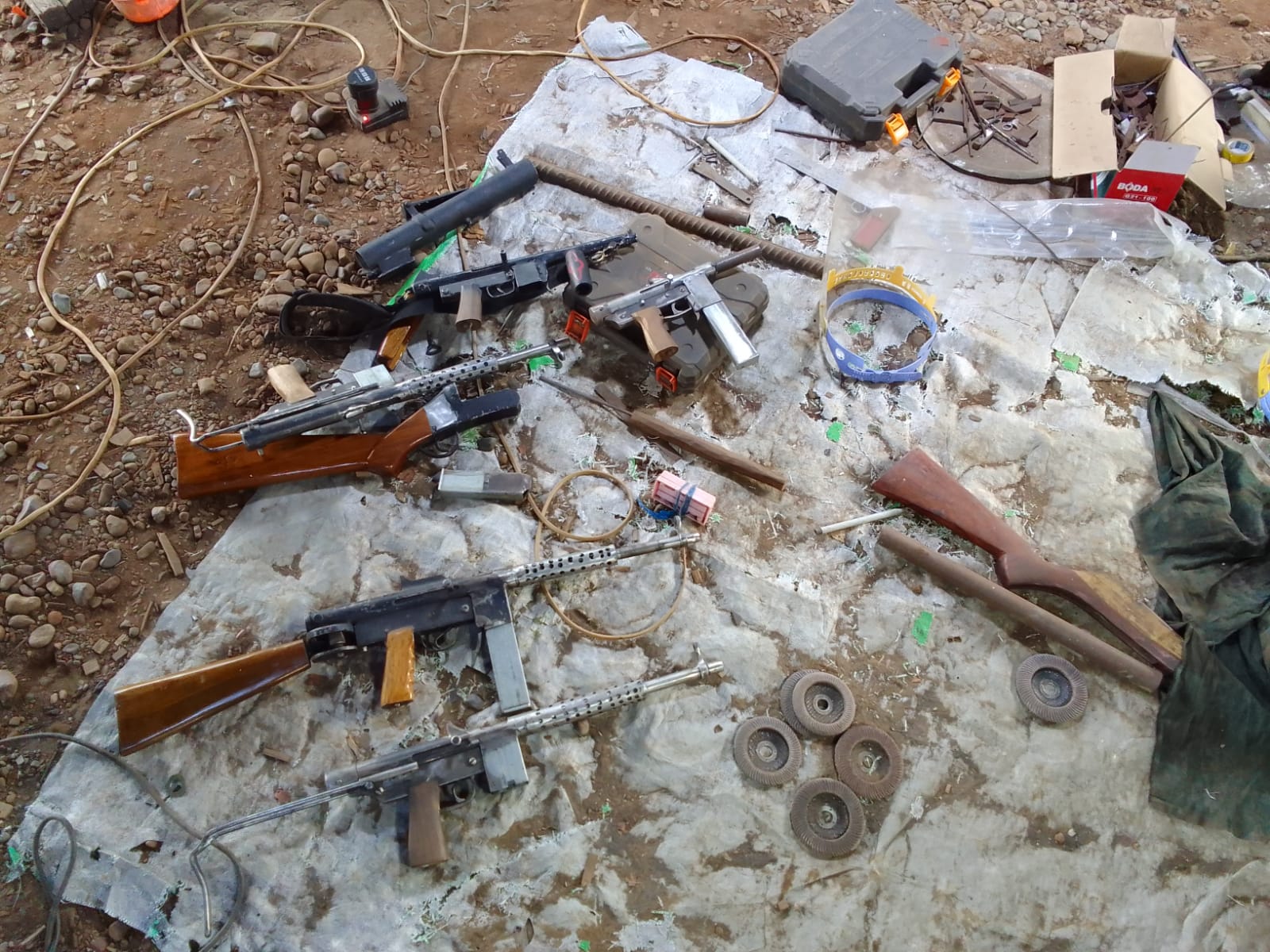About 40 miles north of Kalaymyo city in Myanmar’s Sagaing Region is a village whose residents have come out overwhelmingly in support of the armed resistance to the military regime. While some have joined the People’s Defense Forces (PDFs), a small group has dedicated itself to manufacturing weapons to take on the regime forces.
Accompanied by two functionaries of a PDF, I visited a weapons manufacturing unit in this village on the afternoon of January 21. The unit, which produces only 60 mm mortars and their shells, was set up in January 2022 at the residence of an activist engaged with the civil disobedience movement (CDM) in Kalay.
The village had every few people on the road, but still I was surprised to find the gate open in the house, located deep in the interior of the village. The reason was spelled out by one of the PDF functionaries. “There is nothing to fear as the entire village is opposed to the junta. There were two dalans [informers of the military], who had already fled the village and relocated to some other places,” he said.
The two technicians who greeted us appeared to be in their late 20s. The factory, which measured about 400 square feet, was located in a tarpaulin and bamboo shed in the courtyard of the house. It had all the vital equipment needed to hack and shape iron and steel. There were many uprooted lampposts here, which provided the primary raw material for the mortars.
The technicians displayed a few shells that were produced as ammunition for the mortars. A mortar had been constructed only a day earlier and they agreed to assemble the piece in front of the camera. My companion from the PDF said that a resistance group that had camps deep in the jungles in Kalay was expected to take possession of the mortar very soon.
Manufacturing Small Arms

A weapons manufacturing factory in Kalay, Myanmar. Photo by Rajeev Bhattacharyya.
The Diplomat visited another local weapons factory in Kalay on the same day. This factory was about 20 miles southwest of the unit I had visited earlier. It was bigger and shrouded in secrecy, unlike the previous unit. The double-storied house had high boundary walls and an iron gate that was locked from the outside.
The house did not convey the impression that a range of weapons were being manufactured inside by a team of technicians determined to defeat the military regime. Occasionally, sounds could be heard from the compound of something being scratched, moved, and chopped.
It was after 10 minutes – and after a PDF functionary accompanying me reached the interior of the house by climbing the gate – that a middle-aged man came to unlock the gate. The unit was set up in the basement of the residence where eight people were engaged in making different weapons. I was permitted only to click photographs and strictly instructed to desist from shooting video. Entry was restricted to members belonging to the group engaged in producing the weapons.
The factory was spread over about 800 square feet with areas demarcated for separate activities essential for producing the weapons. There was a wide range of equipment, from welding machines and oxygen cylinders to devices for hacking and giving shape to sturdy iron pieces. Every person had his own specialization. The unit manufactures small arms such as pistols, 9 mm sub-machine guns, 12-bore guns, and landmines.
“Better Guns Can be Produced With More Resources”

Liang (right) examining a 12-bore gun at the weapons manufacturing unit in Kalay, Myanmar. Photo by Rajeev Bhattacharyya
A burly middle-aged man in his mid-fifties, who identified himself as Liang, was the head of the manufacturing unit. Before the coup, he was working as a welder at a factory in Kalaymyo city. After protests erupted in the city on February 6, 2021, and resistance groups began to be formed, he decided to return to his village and contribute to the resistance movement. Liang identified himself as a member of the Pa Ka Pha (Local Defense Force).
The manufacturing unit was set up towards the end of 2021. As of early 2023, a team of about a dozen people from varied backgrounds were involved in manufacturing weapons.
The need is obvious, according to Liang: “There is a huge scarcity of weapons. Many resistance groups have equipped themselves with sophisticated rifles but we have not been able to do that so far. The gap must be filled and the junta must be overthrown.”
He added, “The NUG [National Unity Government] has assured us that we will be provided with weapons soon.”
For now, the resistance relies on the decidedly low-tech efforts of people like Liang. “People in Chin State are acquainted with guns. But the challenge was to churn out pistols and automatic rifles,” he said. The unit cobbled together the necessary know-how and materials: “Some people knew how to manufacture some of these weapons and we also learned a lot from the internet…We grab whatever is available in this region for making the guns.”
Liang said the unit has been learning on the job. “The quality of the weapons has improved over the past few months. We are striving for perfection. Better guns can be produced with more resources.”

9 mm sub-machine guns manufactured at a factory in Kalay, Myanmar. Photo by Rajeev Bhattacharyya
Local weapons manufacturing units have mushroomed in Kalay and other parts of Sagaing Region, according to some functionaries of resistance groups. Sir John, who heads the Pa Ka Pha in north Kalay, said, “These factories produce a wide range of weapons from mortars to pistols. The numbers would be more in the zones that have suffered more from the raids by the regime forces.”
The situation at Kalay stands in contrast with Chin State, where locally made weapons were not seen at the camps of the three resistance groups — the Chin National Army (CNA), Chinland Defense Force (Thantlang), and Mountain Eagle Defense Force (MEDF) — that I visited. Only landmines were manufactured by the MEDF. Those mines have been planted at many places along the boundary of Haimual-New Haimual villages that the MEDF controls.
I saw functionaries of the CNA and the CDF (Thantlang) carrying foreign-made pistols and automatic assault rifles, such as M-16s and AK-56s. In the border district of Tamu, which is contiguous to the Indian state of Manipur, functionaries are equipped mostly with the K-09 (replica of AK-56) manufactured in Kachin by the Kachin Independence Army (KIA) that has close ties with resistance groups in Sagaing Region and Chin State.
Information received from some areas of Sagaing Region in August indicates that some resistance groups have received weapons and ammunition from the NUG. But many others are eagerly awaiting the arrival of consignments through secured routes.

































